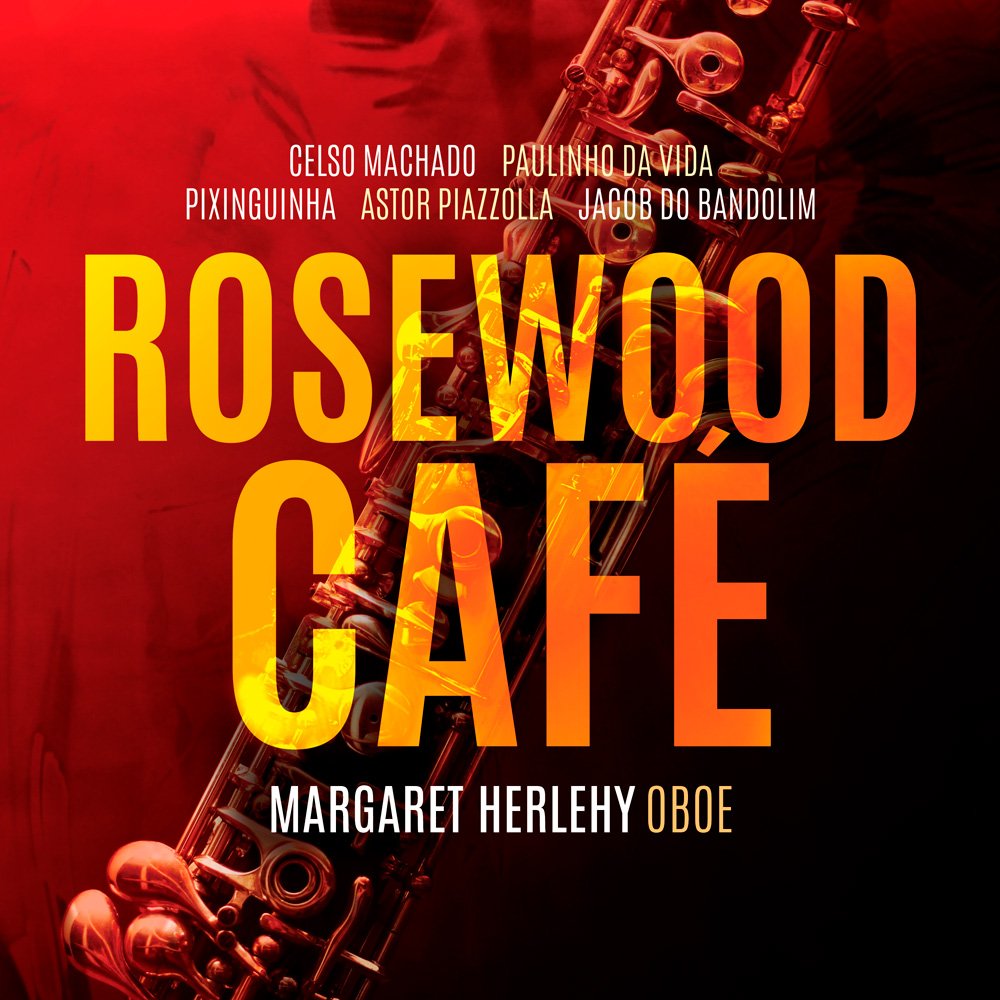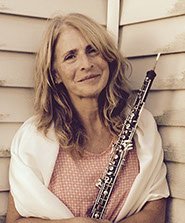Rosewood Café – Album review

Rosewood Café:
the intoxicating oboe of Margaret Herlehy
If you’ve been reading my articles for some time, you know by now that I have a thing for South-American music: it’s sensual, warm, passionate, comforting and challenging in so many ways. It also adapts very well to different genres: from classical to tango to jazz. So, when I came across this recording mixing South-American composers with jazz topped up by a conventionally classical instrument like the oboe, I was certainly intrigued: starting with the title, which comes from a mix of one of the pieces (Café 1930) and the (Brazilian) rosewood with which Mrs. Herlehy’s oboe is made of.
Rosewood Café offers a smooth combination of oboe and guitar, adding to this sonority sometimes a piano, sometimes a flute and a pandeiro (a hand drum popular in Brazil). It’s beautifully played and arranged, giving a new perspective on how well an oboe can not only fit in this kind of music but also enhance it.
- C. Machado – PÉ DE MOLEQUE
- B. Lacerda, Pixinguinha & F. Oliveira – NACHELE TEMPO
- P. Da Viola & F. Costa – CHORO NEGRO
- C. Machado – QUEBRA QUEIXO
- C. Machado – ALGADAO DOCE
- J. Do Bandolim – DIABINHO MALUCO
- C. Machado- PACOCA
- C. Machado- SAMBOSSA
- A. Piazzolla – CAFÉ 1930
The third track, Choro Negro, was a surprise: the only piece of the album without the guitar, it starts with a slow and jazzy piano introduction, the main theme is then introduced by the oboe, while the piano accompanies with a harmonically interesting second line; it’s then time for the piano to pick up the theme and the pace, slightly, just enough to seamlessly tie into the following oboe entrance. The end goes back to the main theme with the oboe, while Strauss’ Rosenkavalier pops up in the harmonic divergencies of the piano. Beautiful!
With Diabinho Maluco, by Jacob do Bandolim, we enter a vibrant atmosphere: it’s a fun and cheerful flute and oboe duet, with the help of a guitar and a pandeiro. The lead instruments alternate and intertwine, in an overlap that mixes Latin music rhetorical figures and sturdy German counterpoint.
Celso Machado is back with the next couple of tracks: Pacoca is quite melancholic, again in a rondeau form; even its most cheerful part goes inevitably back to the somberness of the main motive. Sambossa, on the other hand, took me back to the mellowness and easiness of the first track, with a few more clouds here and there.
Rosewood café: a word on the artists
Mrs. Herlehy is brilliantly accompanied on this album by renown guitarist David Newsam, a graduate of Berklee College of Music in Boston, pianist Henrique Eisenmann, flutist Fernando Brandao and percussionist Negah Santos.
Give it a try and let me know what you think in the comments!
About the author

Gianmaria Griglio
Composer and conductor, Gianmaria Griglio is the co-founder and Artistic Director of ARTax Music.
Interested in some more music? Take a look at this series!


